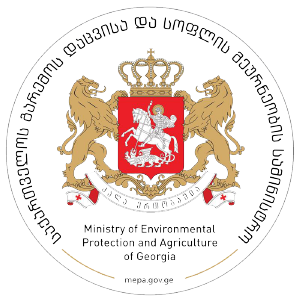

| Pollutant | Description | Sources | Health effects |
|---|---|---|---|
|
PM
Particulate Matter
|
Small particles of gas, dust or other matters including thin droplets of liquid | Diesel engines, thermal plants, industries, dust scattered by wind, wood stoves | Eye irritation, asthma, bronchitis, lung damage, cancer, heavy metals poisoning, effects on the cardiovascular system |
|
NO2
Nitrogen dioxide
|
reddish-brown, highly reactive gas | Motor vehicles, electric facilitates and other industrial, commercial and residential facilities combusting liquid fuels | Susceptibility to respiratory infections, lung irritation and respiratory symptoms (for example cough, chest pain, difficulties breathing) |
|
O3
Ozone
|
Gaseous pollutant formed in the troposphere | Exhaust gases from vehicles and other smoke releases. Formed from other pollutants with solar light | Eye and throat irritation, cough, respiratory tract problems, asthma, lung damages |
|
SO2
Sulphur dioxide
|
Colorless gas, when dissolved in water evaporates forming sulfur acid, and interacts with other gases and particles in the air | Thermal coal plants, oil refineries, sulfuric acid production and smelting ores containing sulfur | Eye irritation, eye watering, weight in chest, shortness of breath, lung damage |
|
CO
Carbon Monoxide
|
Colorless and odorless gas | Exhaust gases from motor vehicles, inner sources including kerosene and wood stoves | Headaches, reduced mental awareness, hearth attack, cardiovascular diseases, fetal development disorders, death |
|
C6h6
Benzol
|
Benzol has sweet smell, is a colorless, volatile and easily flammable fluid that is easily dissolved in water | Benzene is excreted in the air as a result of combustion of coal and oil products, petrol stations and automobile emissions | In humans, acute (short-term) inhalation may cause: dizziness, headache, Irritation of eyes, skin and respiratory tract. As for high concentration inhalation - lost of consciousness. Chronic (long-term) absorption can cause different disturbance in the blood, including reduction of red blood cells and applastic anemia (as a result of bone marrow damage ( caused by radiation, after receiving some poison) |
Air pollution exposure is related to numerous effects on the human health including impairments to the lungs, the hearth, blood vessels and the nervous system. Health effects can vary from person to person. High risk groups, such as seniors, young children, pregnant women and those suffering from chronic heart and lung diseases are more sensitive to air pollution. Children especially have higher risk of exposure, due to their out-of-home activities, and the still developing lungs. Air pollution exposure can cause acute and chronic health effects. The acute effects usually occur immediately and are often reversible once the pollution exposure ends. Chronic effects usually do not occur immediately and are not often reversible once the exposure to the pollutant has ended. Some of the chronic effects are reduced lung capacity and lung cancer, as a result of the long-term exposure to toxic air pollutants. The scientific techniques to assess health effects of air pollution include air pollution monitoring, exposure assessment, dosimetry, toxicology and epidemiology.
Although, in humans, the pollutants may affect the skin, eyes and other systems, they mainly affect the respiratory system. Air is inhaled through the nose, which acts as a primary filtering system. Small hair and the warm, humid environment in the nose effectively remove larger pollutant particles. The air passes through the larynx, esophagus and pharynx before reaching the entrance of the trachea. The trachea is divided into two parts, left and right bronchus. Each bronchus is divided into smaller component parts. The smallest of them are called bronchioles and contain million air bubbles called alveolus. Bronchi and alveoli jointly create the lungs.
Both gases and particulates polluting the air, have negative effect on the lungs. Solid particulates can deposit on the walls of the trachea, bronchus or the bronchiole. Most of these particulates are removed from the lungs during the cleaning process by the cilia, small hair on the cells located on the walls of the airway. This occurs during sneezing and coughing.
Sneezing and coughing returns the particles in the mouth. From there they are either swallowed or thrown out of the organism. However, the smallest particulates can reach the alveoli, from where it takes weeks, months, even years to be thrown out of the body. Polluting gases can also disrupt the function of the lungs by slowing down the functioning of the cilia. The continuous inhaling of polluted air can slow down the normal cleaning action and cause greater number of particulates to reach the tiniest portions of the lungs.
The lungs are responsible for the absorption of oxygen from the air and removing carbon dioxide from the blood stream. The damage from the polluted air can lead to respiratory diseases such as bronchitis, emphysema or cancer. This can additionally impede the functioning of the circulatory system.
Harmful air pollutants can cause other and some rarer but potentially dangerous health effects, including cancer and damages to the immune system, neurological, reproductive and developmental problems. Acute exposure to certain air pollutants can cause sudden death